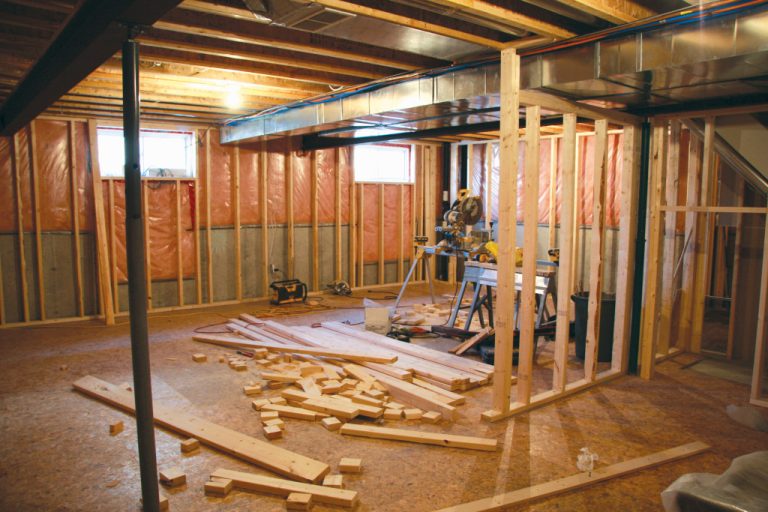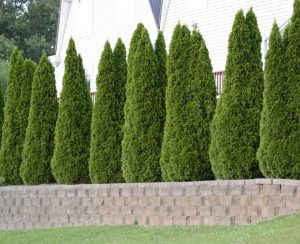- Water damage in basements can be mitigated by identifying the source, sealing cracks, and using professional extraction services.
- Poor ventilation can be improved with an air exchange system, ceiling fans, and air-cleaning plants.
- Prevent mold by addressing water damage, installing a dehumidifier, and removing basement carpeting.
- Low ceilings can be addressed with a drop ceiling, while lighting can be improved with recessed lighting and floor lamps.
Basements are an essential part of every home, providing valuable storage space, laundry rooms, and even man caves. However, with basement spaces come common problems that can make the area a damp, uncomfortable place to spend time.
Luckily, these issues can be resolved with some simple fixes. This blog will explore common basement problems and ways to address them, so you can enhance your home’s lower level and create a comfortable and enjoyable space for your family.
Water Damage
Water damage is one of the most common problems homeowners face with basements. Water can seep through foundation cracks or poorly sealed windows and doors, causing damage to flooring, walls, and even furniture.
The first step to addressing water damage is to identify the source of the problem. You can then seal any cracks in the foundation or repair any leaks in pipes. Additionally, installing a sump pump can help to prevent flooding.
But if the damage has already been done and you’re dealing with wet floors and wet walls, it’s important to take action immediately. Use professional water extraction services to get rid of any standing water. These services can also help to dry out the area and prevent further damage. They may also be able to help you identify any additional steps that need to be taken for repair.
Poor Ventilation
Basements are often damp and stuffy, with poor air quality due to a lack of ventilation. This can create unpleasant odors and even lead to health problems. To address this, consider installing a ventilation system.
An air exchange system can improve air quality, reduce moisture levels, and help to prevent mold growth. You can also improve ventilation by opening windows, installing ceiling fans, and adding air-cleaning plants like spider plants, ferns, and snake plants.
Mold and Mildew

Mold and mildew thrive in damp, poorly ventilated environments and can cause health issues such as allergies, respiratory problems, and headaches. To prevent mold growth, it’s crucial to keep the basement dry.
Address any water damage issues first and foremost, then install a dehumidifier to reduce moisture levels. Additionally, removing any carpeting in the basement can help to prevent mold growth.
Low Ceilings
Low ceilings are a common problem in basements, creating a cramped and claustrophobic feeling. To make the space feel more open and spacious, consider replacing the ceiling with a drop ceiling. This will add a few inches of height and create a finished look to the space. You can also add vertical elements such as shelving or a bookcase to draw the eye upward, creating the illusion of height.
Inadequate Lighting

Basements are often dark and uninviting spaces, with limited natural light from small windows near the ceiling. Poor lighting can make the basement feel cramped and uninviting. Fortunately, there are plenty of lighting solutions you can consider to brighten up the space. Here are four of the best ones:
Install recessed lighting
This is a great way to add plenty of light to the room without taking up any floor or wall space. Recessed lighting is easy to install and can be used in combination with other lighting solutions.
Add wall sconces
Wall sconces are a great way to add ambient light to the space without taking up too much room. They’re also a stylish and attractive way to brighten up the basement.
Hang pendant lights
Pendant lights are a great way to add a pop of color and light to the space. Hang them in the center of the room for maximum impact.
Add floor lamps
Floor lamps are an excellent choice for basements as they don’t take up any wall or ceiling space. They can also easily be moved around to adjust the level of light in the room.
By investing in these lighting solutions, you can create a bright and inviting atmosphere in your basement.
Transforming your basement from an underutilized storage area to a welcoming, functional space can be accomplished by addressing common issues such as water damage, poor ventilation, mold and mildew, low ceilings, and inadequate lighting.
With the right tools and expertise, you can easily overcome these challenges and enhance the value and comfort of your home. Remember, every problem has a solution, and with a little care and attention, your basement can become one of the most cherished areas of your home.











